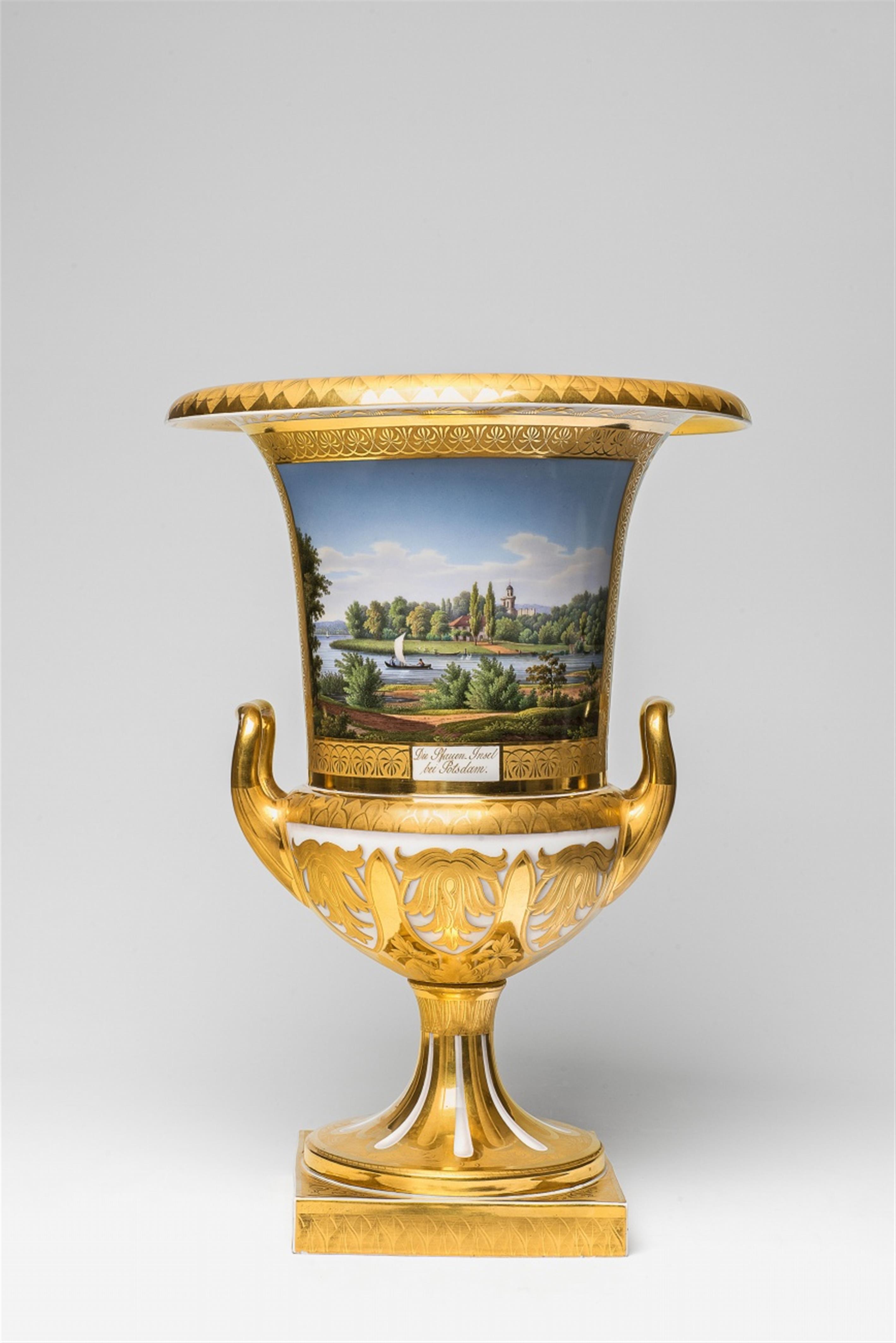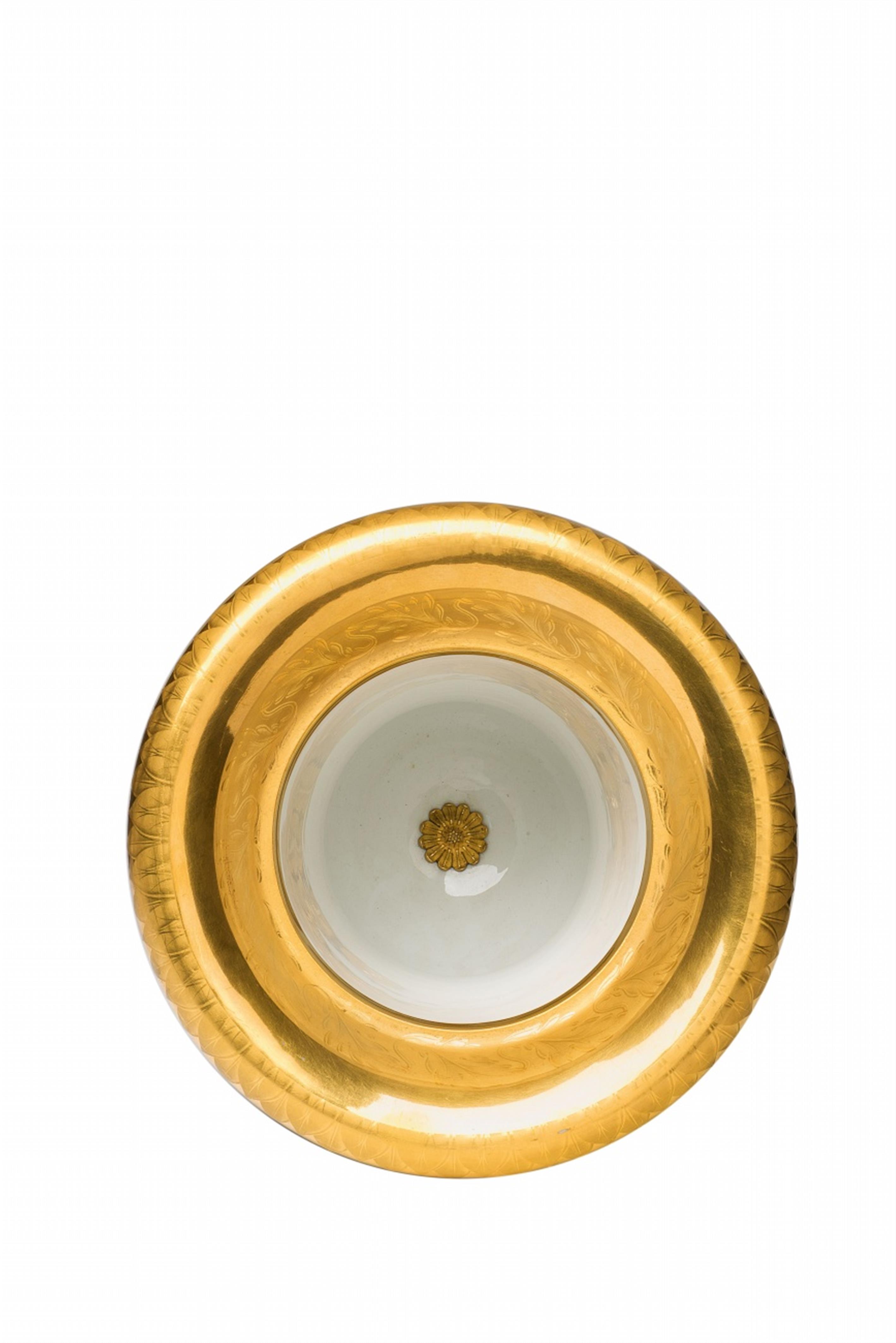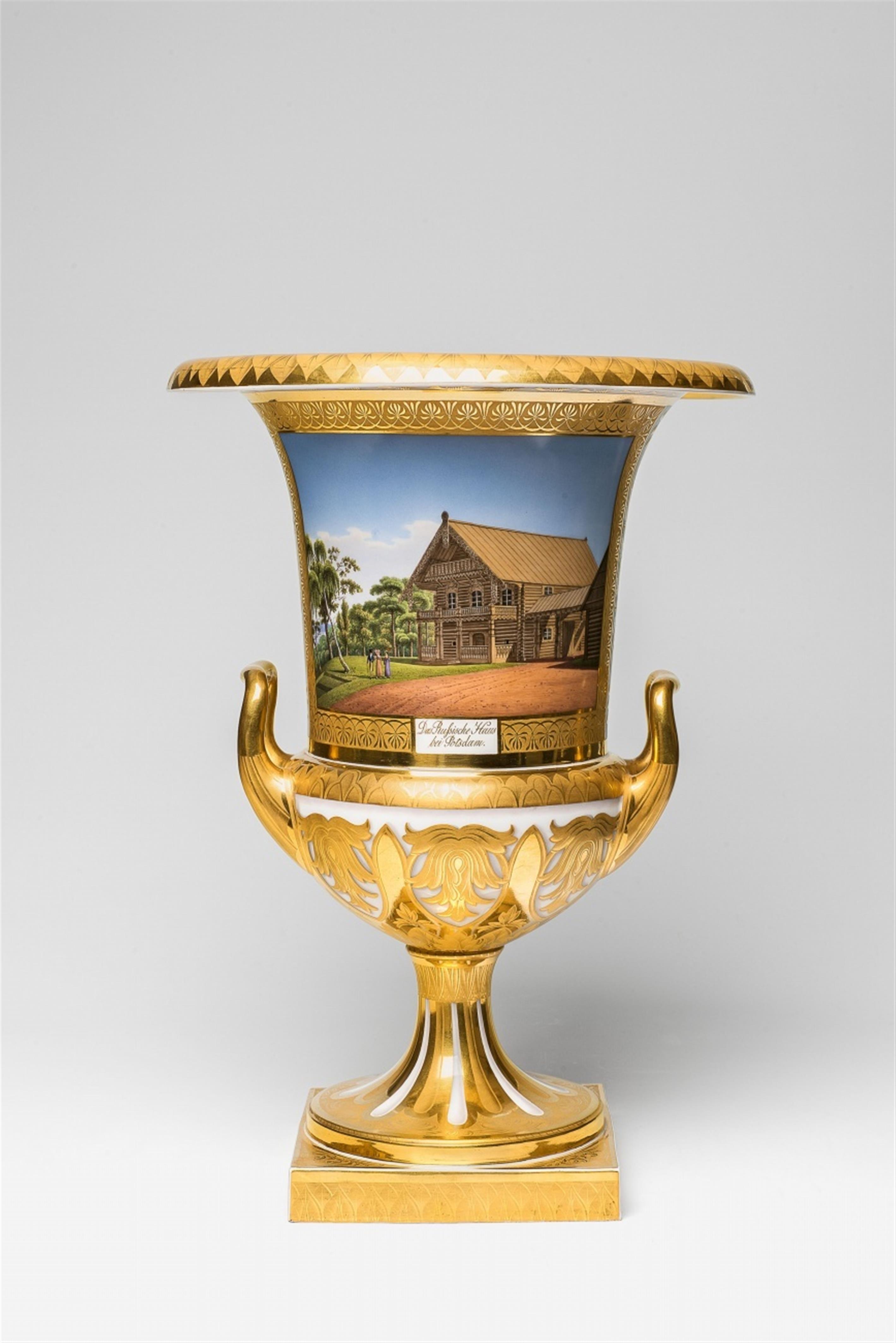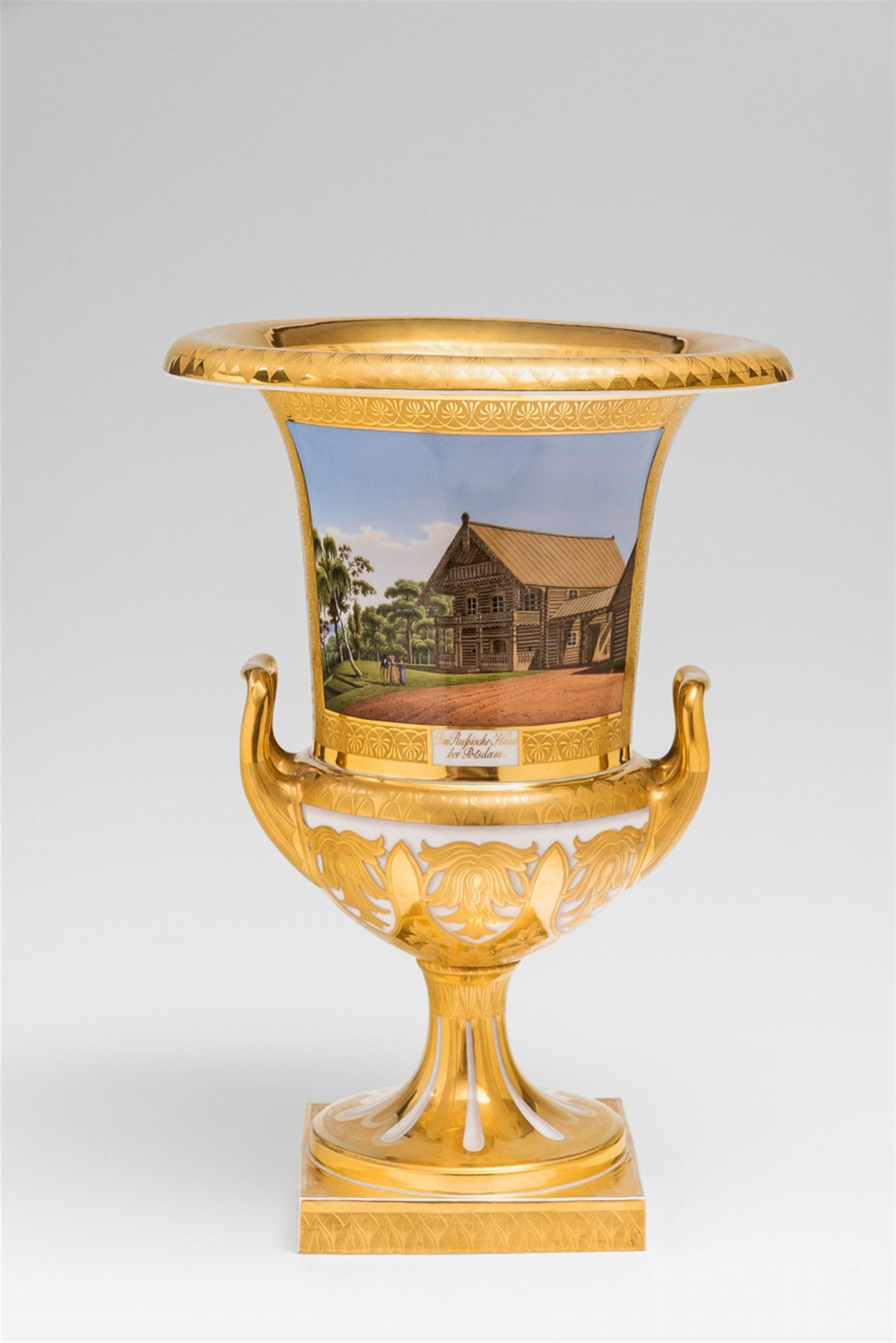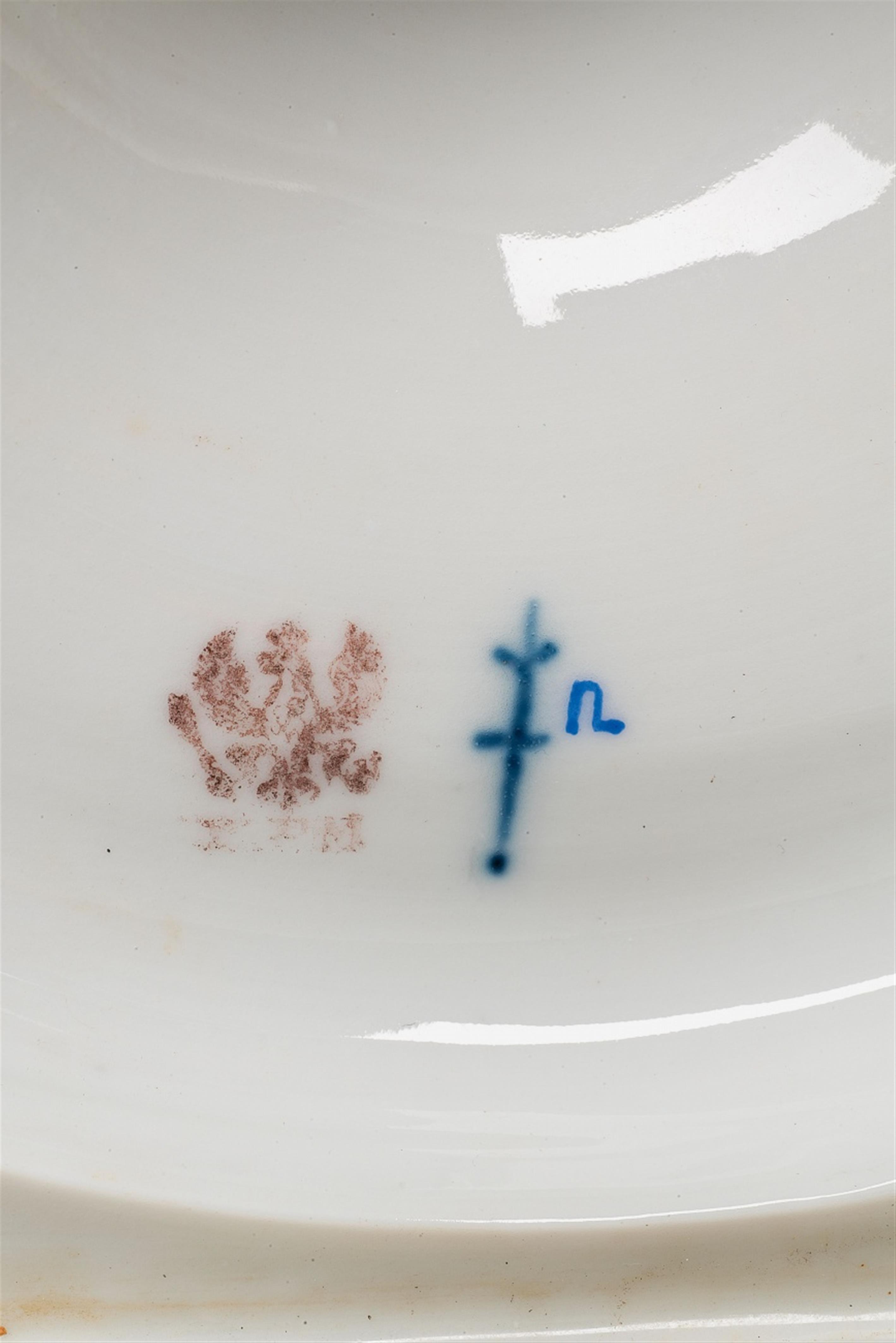A Berlin KPM porcelain krater-form vase with views of Potsdam
With the original gilt screw mountings. Model no. 1005. Fired in two parts and screw-mounted. Decorated with large finely painted views of Peacock Island (after Eduard Lautier's painting from 1821) and the Russian House near Potsdam. With unusual trompe l'oeil gilding. Blue sceptre mark, brown imperial eagle mark, enamel blue painter's mark. H 42.5 cm.
King's gift to Princess Klari in Teplice / Teplice, 1825.
This vase depicts the Pfaueninsel (Peacock Island) on one side, and the Nikolskoe log cabin on the other. The King had the wooden chalet constructed in 1819 in the manner of Russian peasant houses and named it “Nikolskoe” - belonging to Nicholas. The house was built by a company of “Guardepioniere” under the command of Captain Snethlage. Its first inhabitant was Frederick William III's coachman Iwan Bockow. The cabin is made from thick wooden beams crossing over at the corners, and the windows, doors, balcony, and projecting roof are decorated with carvings. In the wake of the German Campaign of 1813 - 1815, Russo-Prussian relations were strong. This was cemented by the marriage of Princess Charlotte, eldest daughter of Frederick William III, to the later Tsar Nicholas I in 1817. This period of camaraderie between the two nations inspired the construction of several Russian style buildings in Berlin and Potsdam.

